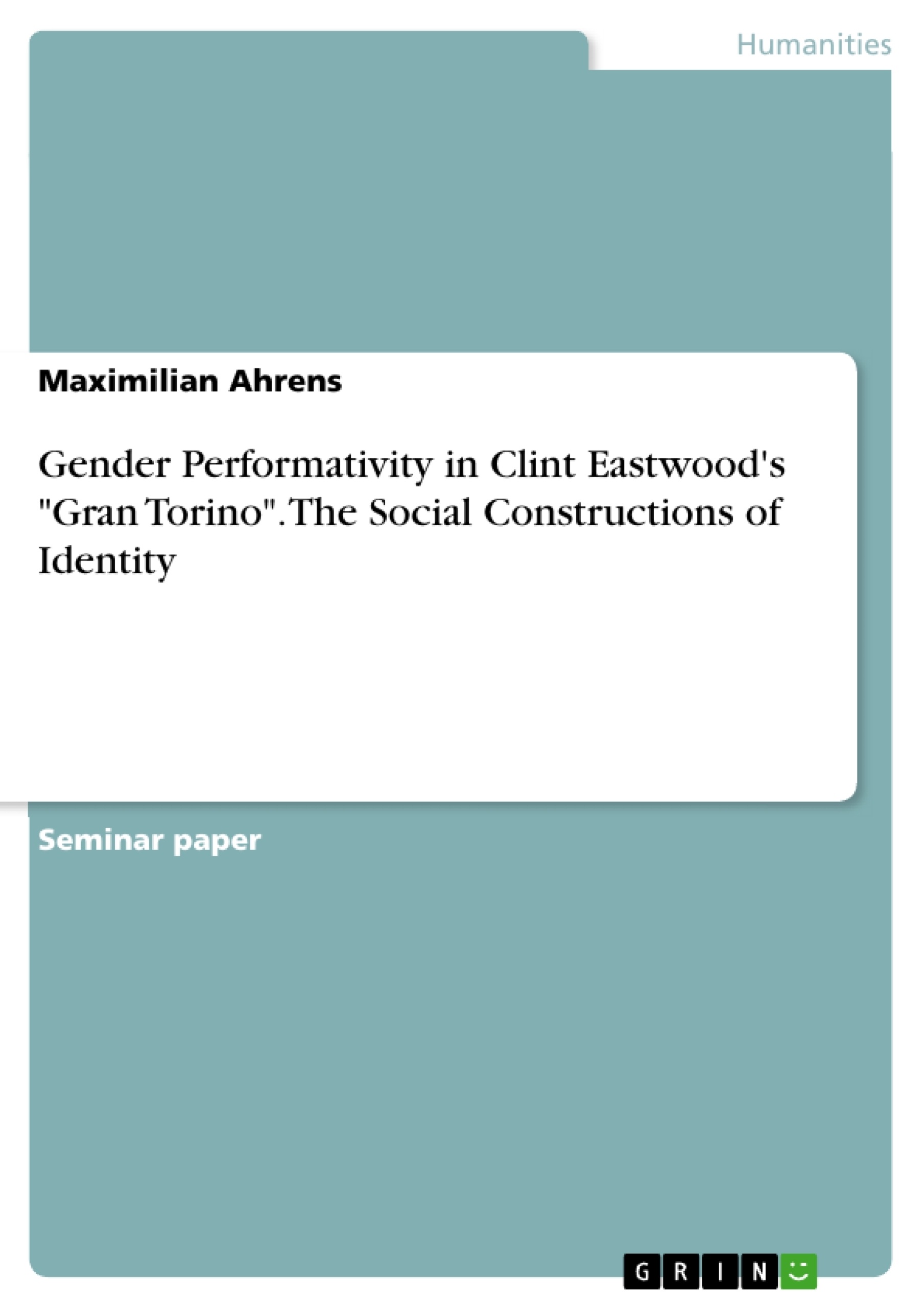To examine how Gran Torino mirrors the discourse on gender identity and how it shows a conservative take on a masculinity crisis, this paper will analyze the movie based on popular positions concerning the topic.
In the confines of his movies’ narration, Eastwood’s portrayal of men and what it tells the viewer about how a man has to behave remained unreflected for most of his career. His iconic depictions of tough male characters could in a sense be interpreted as some of the only resilient entities navigating through uncertain, everchanging America.
In Gran Torino, at the age of 78, we find Eastwood patrolling a newfound border: He tackles and questions the concept of masculinity that defined his career.
Inhalt
1. Introduction
2. Judith Butler’s concept of gender performativity
3. Critique of Judith Butler’s theory
4. Gran Torino Synopsis
5. Gran Torino and gender performativity
6. Conclusion
7. Sources
7.1. Literature
7.2. Film
7.3. Online
- Quote paper
- Maximilian Ahrens (Author), 2021, Gender Performativity in Clint Eastwood's "Gran Torino". The Social Constructions of Identity, Munich, GRIN Verlag, https://www.grin.com/document/1061016
-

-

-

-
Upload your own papers! Earn money and win an iPhone X. -

-
Upload your own papers! Earn money and win an iPhone X. -

-
Upload your own papers! Earn money and win an iPhone X. -

-
Upload your own papers! Earn money and win an iPhone X. -

-
Upload your own papers! Earn money and win an iPhone X.

